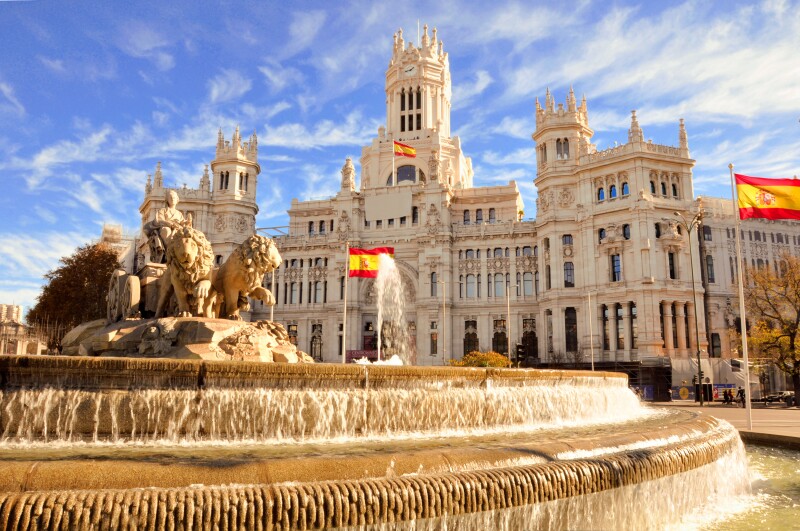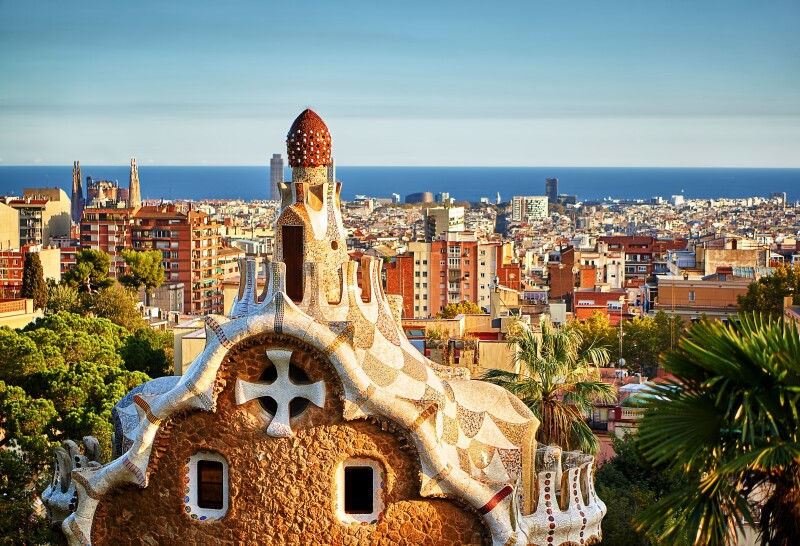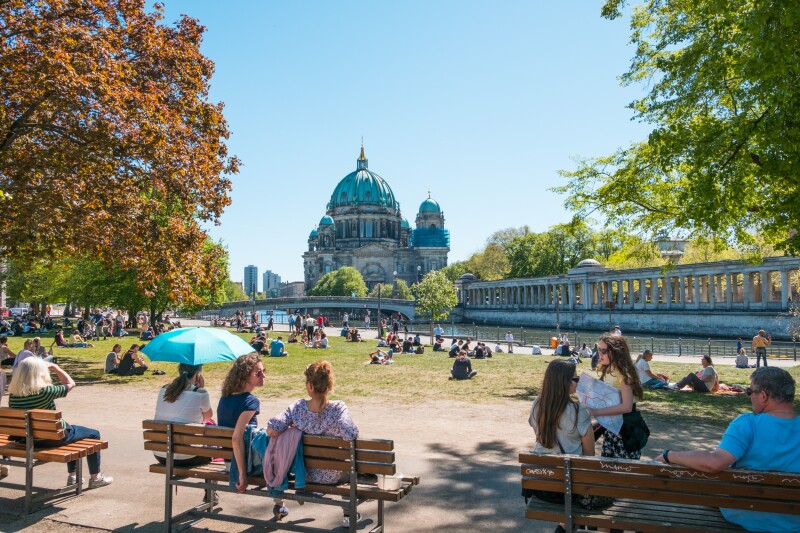What makes a city the greatest in the world? For 10 years, Resonance—a consultancy group in real estate, tourism, and economic development—has taken a holistic approach with its Best Cities program.
Rather than just rely on data about, say, a place’s landmarks or how easy it is to bike there, Resonance uses a combination of core statistics (like the GDP and the number of Fortune Global 500 corporate headquarters) and qualitative evaluations by both locals and visitors (from surveys and online channels such as Instagram and Tripadvisor). This varied data aims to paint a more comprehensive picture of the world’s best city.
The organization’s new 2025 World’s Best Cities list has just been released, and many familiar destinations are at the top. Several of the cities on this year’s list—all with metropolitan populations of more than 1 million—have moved toward a sustainable reality in their own ways: Several have ideated High Line–inspired green spaces (London and Tokyo included), and another has taken tourism growth into its own hands with limits on short-term rentals (Barcelona).
How the best city rankings work
“This year’s World’s Best Cities Report is also the first to feature our new partnership with [market research firm] Ipsos to incorporate perception-based data into our rankings—the results of which also demonstrate that the world still very much aspires to live, visit, and work in the planet’s largest cities,” Resonance Consultancy president Chris Fair said in the report.
This perception-based data was gathered from the opinions and preferences of more than 22,000 respondents across 30 countries through the following questions:
1. What are the Top 3 towns or cities you would most like to live in someday?
2. What are the Top 3 towns or cities you would most like to visit in the next 12 to 24 months?
3. What 3 towns or cities do you believe currently offer the best job opportunities?
The responses were then factored into Resonance’s rankings of Lovability, Livability, and Prosperity to define each city’s relative Place Power Score:
Livability: This category measures the quality of a place’s environment, both natural and built. Subcategories include rent (the typical cost of renting a one-bedroom apartment in a city center), biking (determined by the density of mapped bike pathways per 100,000 residents in a city), and healthcare system index (the perceived quality of healthcare systems by evaluating factors like healthcare equipment and costs.)
Lovability: The lovability category considers the vibrancy and quality of a city, as well as how much it inspires residents, businesses, and visitors to promote it. This includes culture (the number of concerts, shows, and events rated above four stars, according to Tripadvisor.com), restaurants (the total number of restaurants listed on Tripadvisor within a city), and the number of Instagram hashtags.
Prosperity: The prosperity category measures the strength of a city’s human capital. Subcategories include educational attainment (the percentage of the population with a bachelor’s degree or higher), Fortune Global 500 companies (the number of Fortune Global 500 corporate headquarters), the size of the largest convention center in the city, and poverty rate (the percentage of the population living below the national poverty line).
Here’s how the world’s best cities ranked in the report for 2025, released November 20, 2024:
1. London, England
Rankings: Lovability (1), Prosperity (2), Livability (3)
“Navigating the complexities of a post-Brexit era, geopolitical uncertainties and economic challenges, London’s resilient spirit and unmatched global appeal have solidified its place at the pinnacle of our annual ranking,“ says Resonance. England’s capital snagged the top spot for the 10th year in a row, continuing to draw students, investors, and tourists alike. A $305 million upgrade of the Gatwick Airport and new metro stops on the Elizabeth line are a few of the developments that indicate the city’s focus on improving infrastructure. Resonance particularly spotlights the building of the Camden Highline, a mile-long greenway inspired by New York’s High Line, as a project that demonstrates “London’s dedication to enhancing quality of life for both residents and visitors.”
Why we love it: London’s main sights might date back millennia, but the capital’s shops, bars, hotels, and restaurants continue to evolve on an almost weekly basis. Whether you’re outdoorsy, hungry, or bringing a family, there’s a distinct London neighborhood to investigate—and it will likely look different from your last visit. For recent hotel options, there’s the Raffles London at the OWO and the sustainability-meets-luxury-inspired 1 Hotel Mayfair.

New York ranked second in the culture subcategory on the 2025 World’s Best Cities list.
Courtesy of Colton Duke/Unsplash
2. New York City, United States
Rankings: Lovability (3), Prosperity (1), Livability (2)
The pandemic exodus led some to believe New York City’s reign was over, but this U.S. city’s number two ranking—jumping from number three last year—proves that it’s not going anywhere. Resonance says tourism numbers for the city are skyrocketing from 33 million visitors in 2021 (which was less than half of 2019’s numbers) to 62.2 million in 2023. NYC is welcoming back visitors in style with major upgrades to its international gateways: Newark Liberty International Airport, John F. Kennedy International Airport, and LaGuardia Airport all have new terminals (and they’re looking fine.) The Virgin and the Surrey are only a few of the impressive hotels ready to host incoming visitors—check out Afar’s review of the Warren Street Hotel, which opened in 2024.
Why we love it: “The City” (as locals call it) consistently ranks for its culture, thanks to its world-class Broadway shows, restaurants, sporting events, and museums. New experiences and landmarks, such as Summit One Vanderbilt’s all-glass exterior elevators, are constantly being added to classics like the Empire State Building.

Paris’s hospitality industry is projected to be worth more than $49 billion by 2032, compared to $36.8 billion in 2023.
Photo by Catarina Belova/Shutterstock
3. Paris, France
Rankings: Lovability (2), Prosperity (3), Livability (1)
“While the 2024 Summer Olympic and Paralympic Games showcased athletic achievement (to say nothing of French heavy metal), Paris continues to blow our minds with its future-focused initiatives in urban reinvention,” Resonance says in its report. The city is making leaps in making car-less mobility more accessible: It’s promising more than 435 miles of bike paths by 2026 and has gained an extra 74 acres of pedestrian areas through widened sidewalks and car-free zones since 2020.
The expansion of the Paris Métro—with significant upgrades that include a new 125-mile network boasting four additional lines—is, according to the French government, Europe’s largest civilian infrastructure project.
Why we love it: Off the heels of the 2024 Olympics, Paris is only getting better. Improved infrastructure, a commitment to pedestrians, and luxurious hotels add to a city we love for its world-class art, shopping, and global cuisine.

Tokyo ranked first in the subcategories of both shopping and restaurants in the World’s Best Cities list.
Photo by Shutterstock
4. Tokyo, Japan
Rankings: Lovability (4), Prosperity (6), Livability (4)
“These days, Japan’s capital has set its eyes on redefining the urban experience, with strategic investments in public spaces, culture, and tourism,” says Resonance. There’s much focus around the resurgence of its tourism hospitality sector as the country has a national target of attracting 60 million tourists by 2030. One of its biggest pushes toward sustainable development is its transformative project inspired by New York City’s High Line, which aims to repurpose a mile-long stretch of the Tokyo Expressway into a pedestrian walkway (the project intends to be partially open by 2030).
And as the world’s best city for shopping, wallets will likely open on visits to spots like Miyashita Park and the Ginza Six center.
Why we love it: Ranked first in the survey’s restaurants subcategory, Tokyo is home to some life-changing ramen, making it a destination worth planning an entire trip around food. And if you are heading to the city alone, don’t worry. The country is one of the best places to visit as a solo traveler.
5. Singapore
Rankings: Lovability (10), Prosperity (5), Livability (8)
Singapore has become one of the Asian continent’s most modern, well-organized, and captivating urban centers, according to Resonance. And it’s more than iconic views from the rooftop infinity pool of Marina Bay Sands that are grabbing people’s attention. “Singapore’s commitment to waterfront development is evidenced by ambitious projects like the Great Southern Waterfront, set to transform the southern coastline. The project plans to add around 9,000 housing units and develop vibrant community spaces, bolstering Singapore’s already impressive livability,” the report says. “The upcoming mega port in Tuas, poised to be the world’s largest fully automated terminal, exemplifies the nation’s focus on logistical efficiency and forward-thinking urban planning.”
Why we love it: The Little Red Dot, as the city-state is affectionately called, is highlighted for biking and shopping; it earns top spots in our eyes (and stomachs) for its famous hawker stall street food, its garden-like airport terminal, and the Raffles Singapore hotel, which has been welcoming travelers since 1887.

Rome’s incredible history is on display throughout the city, coming in fourth in the sights and landmarks subcategory.
Photo by volkova natalia/Shutterstock
6. Rome, Italy
Rankings: Lovability (5), Prosperity (72), Livability (5)
Jumping from its number 11 ranking on the 2024 World’s Best Cities list, Rome’s appeal is rooted in many of its iconic landmarks, but goes beyond that as Resonance says the city offers “residents and visitors experiences that go beyond tourism—inviting them into the daily rhythms of a city that has in many ways defined Western civilization.”
Several hotel openings over the past year have pointed to a resurgence of Italy’s capital: The Six Senses Rome and Bulgari Roma are already open, with the Thompson Rome, the Four Seasons, and Corinthia just a few of the additional properties on the way.
Why we love it: Rome wasn’t built in a day, so travelers should take their time when experiencing the Eternal City (or try to pack it all in on a long weekend). The Colosseum, the Pantheon, and St. Peter’s Basilica are obvious starts, but try to embrace the Italian way of slow living—and eating—at new restaurants like Pulejo, Don Pasquale, and Da Etta.

Madrid’s approval of Madrid Nuevo Norte signals a move toward more planet-saving approaches in urban development.
Photo by Eszter Szadeczky-Kardoss/Shutterstock
7. Madrid, Spain
Rankings: Lovability (7), Prosperity (18), Livability (9)
“Madrid’s sustainability-driven investment in its bounteous urban and natural assets is a wonder to watch unfold in real time,” Resonance says. An electric bus network—which, according to Resonance, trails only that of Berlin in Europe—EV charging stations, and plentiful bike lanes reflect some of its improvements in the outdoor realm.
Perhaps most exciting is the recent full approval of Madrid Nuevo Norte in the city’s underused northern rail district: The project attempts to reimagine a more than 544-acre area leading to Chamartín station as a residential and business neighborhood. It’s the largest urban regeneration project in Europe.
Why we love it: The capital of Spain is a feast for the senses, filling them with fine art, tapas, and flamenco music. Before or after your siesta, explore the cultural epicenter with trips to newly opened local indie cinemas like Cines Embajadores and the recently unveiled Royal Collections Gallery.

Antoni Gaudí fans have even more of a reason to visit Barcelona in the future.
Photo by Luis Pina/Shutterstock
8. Barcelona, Spain
Rankings: Lovability (6), Prosperity (38), Livability (6)
Why we love it: Barcelona is an almost ideal European city, one with welcoming weather year round and “striking architecture and miles of golden sandy beaches within city limits,” says Resonance. One of the biggest sources of excitement is the announcement that Gaudí’s Sagrada Familia is almost finished (it’s aiming for a full completion in 2026).
The 12 million annual tourists who come to the city are coming back, but Barcelona’s making sure tourism doesn’t get out of control. Mayor Jaume Collboni noted that there would be a total ban on short-term rentals as of 2029, with a plan to stop issuing new short-term rental licenses immediately.
Why we love it: Barcelona is home to miles and miles of beaches, iconic parks, and Gaudí’s iconic architectural landmarks. Its activities aren’t limited to the daytime—Barcelona ranks number one in the nightlife subcategory.

Visit some of Berlin’s most revered institutions on Museum Island.
Photo by hanohiki/Shutterstock
9. Berlin, Germany
Rankings: Lovability (9), Prosperity (7), Livability (35)
The year 2024 marked the 35th anniversary of the Berlin Wall’s fall. Since then, Resonance says the city has continuously been defined by its “embrace of immigrants from all over the world in search of a new life.” The past year showed its capability of drawing travelers to exciting events on a large scale, most notably with its Olympiastadion at the 2024 UEFA European Football Championship.
Its connection to history remains steadfast. The city has almost 200 museums offering everything from the Museum of Asian Art to the new Humboldt Forum. “Berlin is not only a cultural hub but also an economic powerhouse,” Resonance says.
Why we love it: Berlin’s unique energy is found throughout its 12 kiez (neighborhoods). In this city, you can get a dose of art and culture through independent galleries in addition to its city-owned museums, covering everything from typography (Buchstabenmuseum) to Asian art (Museum of Asian Art). Thanks to its renowned nightlife, Berlin continues to stimulate visitors until the wee hours of the morning.

Sydney, Australia, shot up to the top 10 list from last year’s 35th spot.
Photo by Oskars Sylwan
10. Sydney, Australia
Rankings: Lovability (17), Prosperity (12), Livability (10)
“Today’s Sydney finds itself at a pivotal juncture that looks to infuse renewed vitality into the central business district (CBD) and improve the greater city’s impressive #10 ranking in our overall Livability index,” says Resonance. The CBD used to be mainly a commercial area, but new tram lines and an expanded harbor are giving more juice to otherwise unused spaces. Its arts and culture scene is growing too, most prominently with the doubling of exhibition space at the Art Gallery of New South Wales—works here focus on Aboriginal and women artists.
Why we love it: Sydney is a stunning city year round, as Resonance notes its “long, laid-back summers melt into mild, mellow winters.” Sydneysiders have a lot to show off, from its iconic Opera House to the nearby Bondi beach.
To see the full list of the world’s 100 best cities, visit bestcities.org.
This article was originally published in 2020. It is updated annually.











